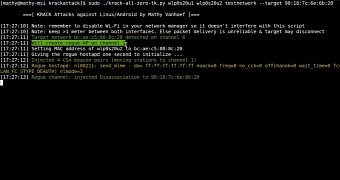As you are aware, there's a security vulnerability in the wild affecting all devices that support and use the Wi-Fi Protected Access II (WPA2) security protocol, including those running Apple's iOS, macOS, tvOS, or watchOS.
While difficult to exploit or patch, the WPA2 bug was publicly disclosed this morning by security researcher Mathy Vanhoef, and it would appear that it affects millions of devices worldwide, including wireless routers, smartphones, smartwatches, tablets, PCs, and all those modern, futuristic IoT (Internet of Things) gadgets.
Attackers can use a key reinstallation attack (a.k.a. KRACK) to exploit the WPA2 vulnerability in an attempt to decrypt your network traffic and steal sensitive information, including credit card numbers, passwords, usernames, etc. So all devices using the WPA2 protocol are at risk right now, which means they need to be patched urgently.
Microsoft was first, but Apple catches up
Microsoft was among the first tech giants to address the WPA2 bug in their Windows 10 operating system with the updates it released last week on October 10, 2017, but Apple catches up and confirms for iMore's Rene Ritchie that it patched the Wi-Fi vulnerability in the latest beta versions of iOS, macOS, tvOS, and watchOS.
We're aware of the fact that we said "beta" in the paragraph above, as the stable builds of Apple's iOS, macOS, tvOS, and watchOS operating system remain vulnerable to KRACK attacks. Therefore, until Apple releases new versions of its latest stable operating systems, we think it's safer to switch to a beta build.
However, betas are intended for developers, yet Apple also offers a public beta program, so if you don't know how to jump into the iOS, macOS or tvOS public beta bandwagon, go ahead and use our in-depth tutorials (here, here and here) to learn how to install the latest beta releases of Apple's operating systems and stay safe.
As for the rest of your smart devices, make sure you check for updates or install beta versions of their firmware, if available. We always recommend our readers to keep their computers and devices up-to-date at all times, but please try to keep in mind that a beta software may contain bugs or unknown issues, too.
Apple has confirmed to me that #wpa2 #KRACK exploit has already been patched in iOS, tvOS, watchOS, macOS betas.Deeper dive to follow. — Rene Ritchie (@reneritchie) October 16, 2017

 14 DAY TRIAL //
14 DAY TRIAL // 